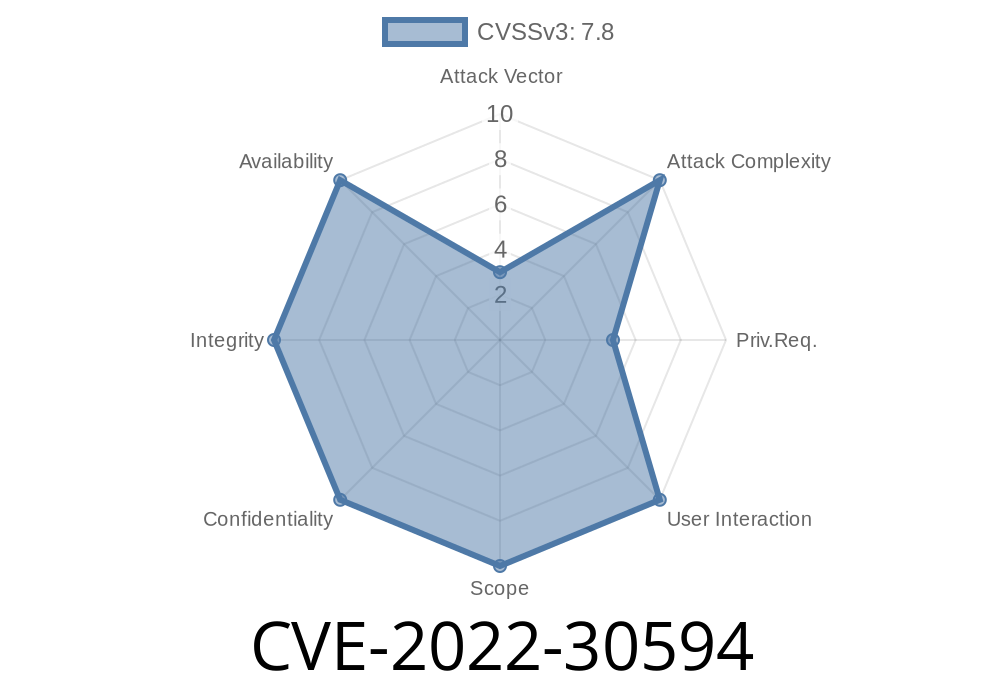The Linux kernel is the fundamental component of the Linux operating system, impacting every aspect of it, from the file system to the network stack. A crucial vulnerability was recently discovered in the Linux kernel before version 5.17.2 concerning the handling of seccomp (secure computing) permissions. Tracked as CVE-2022-30594, this vulnerability enables attackers to bypass intended restrictions on setting the PT_SUSPEND_SECCOMP flag. This article delves into the details of the vulnerability, covering the affected code snippet, links to original references, and the potential exploit methodology.
Code Snippet
The vulnerability lies in the PTRACE_SEIZE, a specific code path in the Linux kernel. To better understand the issue, let's look at the following code snippet from the Linux kernel:
case PTRACE_SEIZE:
if (req == PTRACE_SEIZE && (data & __PTRACE_SEIZE_MASK) != data)
ret = -EINVAL;
break;
As evidenced above, the code doesn't adequately handle the permissions when setting flags for the PT_SUSPEND_SECCOMP. This opens up an avenue for attackers to gain greater control than intended.
Original References
This vulnerability was initially disclosed through the Linux kernel mailing list by the researcher who discovered it. You can find the relevant patches and discussions at the following links:
- Patch for Linux kernel 5.17.2: https://git.kernel.org/pub/scm/linux/kernel/git/torvalds/linux.git/commit/?id=8f1ec9051872e58a54458db9836acb8356a5f340
- Mailing list discussion: https://lore.kernel.org/lkml/20220403153619.102099-1-keescook@chromium.org/T/#u
Exploit Details
An attacker exploiting this vulnerability could potentially bypass the security measures implemented by seccomp. As seccomp is primarily used to restrict system calls that an application can execute, bypassing these limitations may have severe repercussions for system security. This could allow an attacker to execute unauthorized code or gain unauthorized access to system resources.
It's important to note that the exploitation of this vulnerability would require the attacker to have local access to the system. Nevertheless, the potential impact on system security warrants attention, and it's essential to apply security patches to prevent exploitation.
Conclusion
CVE-2022-30594 highlights the importance of proper permission handling in the Linux kernel. By mishandling seccomp permissions, this vulnerability exposes systems to potential security breaches. It's crucial for users and administrators alike to be aware of this issue and apply the patches provided by the Linux community. Stay vigilant and keep your systems updated to minimize risk and maintain a secure computing environment.
Timeline
Published on: 05/12/2022 05:15:00 UTC
Last modified on: 07/07/2022 15:15:00 UTC
